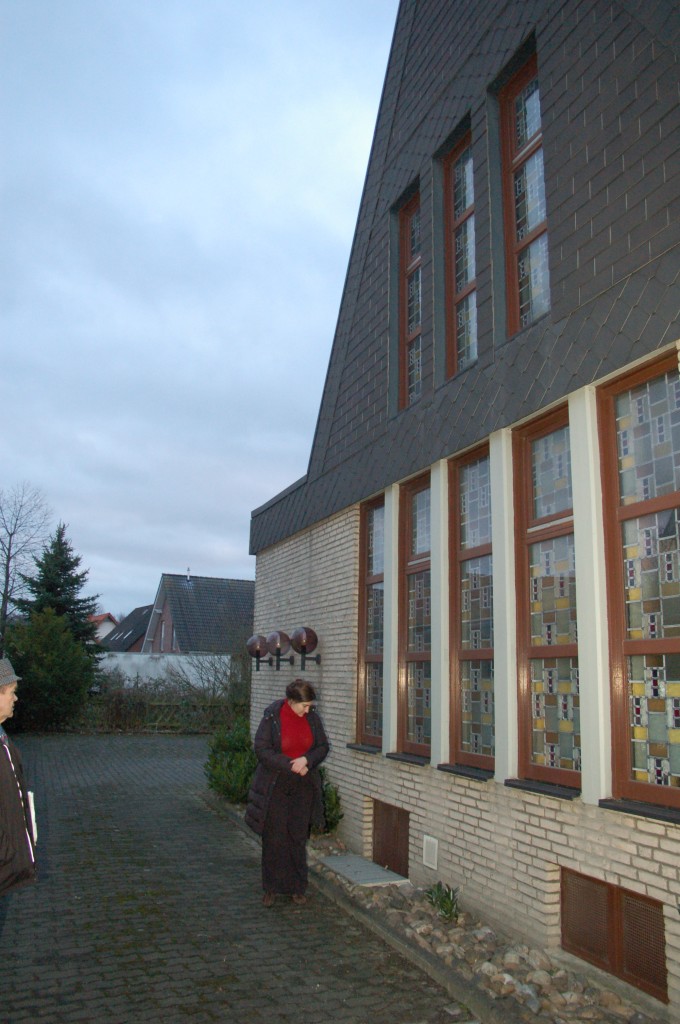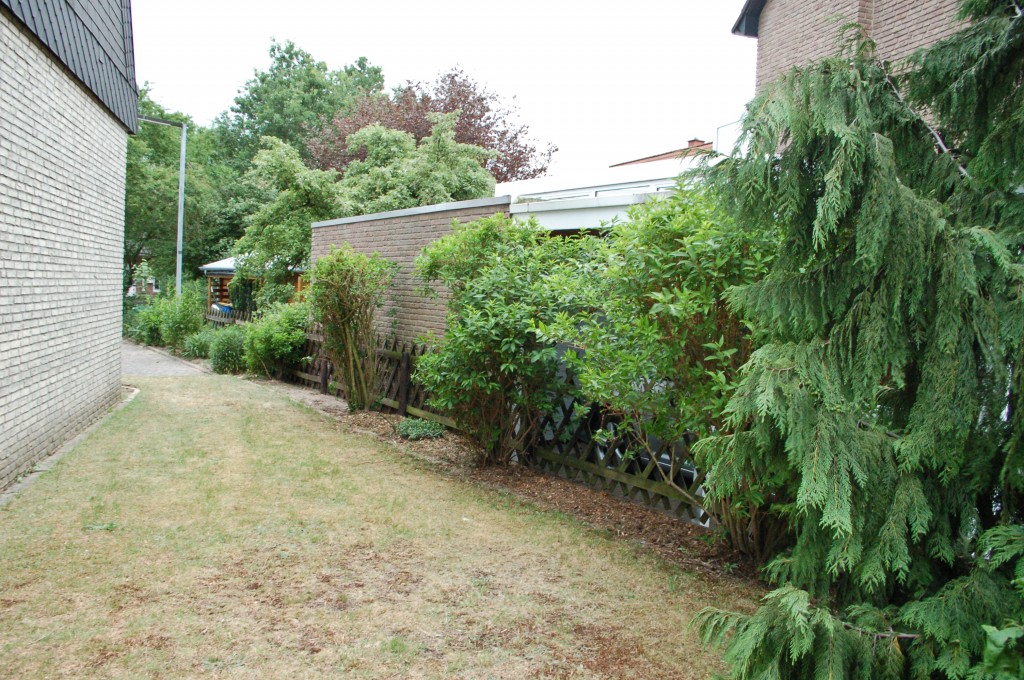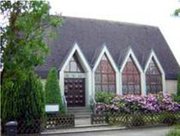The past few weeks the weather has been beautiful, so I’ve been very busy doing rather than writing about doing. Today rain is falling in buckets, so I’ll try to catch up with writing about all the things I’ve been up to.
This pictorial tour is primarily meant for me to keep track of the plants that were here when we purchased the place and a reminder of the initial state of the yard.
Rhododendrons and the Front Yard
Directly next to the front of the house grows a lovely mature rhododendron hedge. As things stood at the outset, this hedge is the jewel of the garden. Unfortunately, the rhododendrons had a rather bad case of bud blast, and have gotten too tall and leggy. The best solution to these problems seems to be some strong pruning over the course of a few years. This will reduce the number of blooms for a couple of years, but hopefully will rejuvenate the hedge in the end.
Another peculiarity of the rhododendron hedge – the first bush on the left is a different cultivar from the rest. It blooms a few weeks earlier, and in a somewhat bluer purplish pink than the rest.
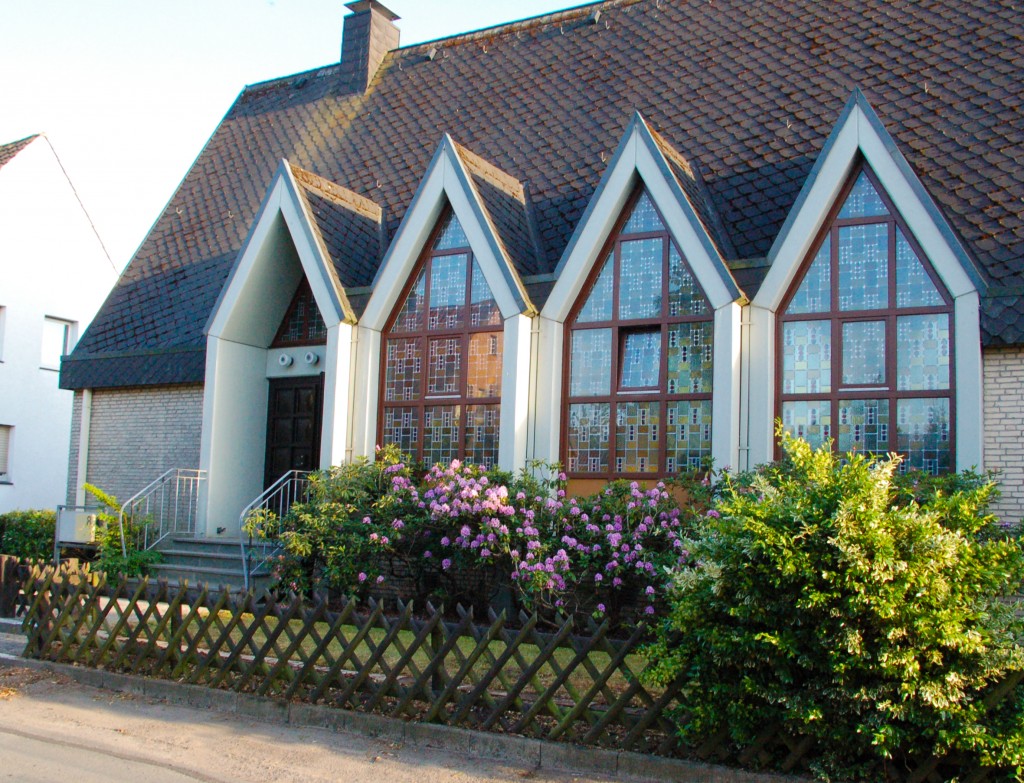
The rhododendrons in May. The left-most oddball rhododendron is already done blooming. The bush in the front is a Japanese spindle.

A view of the sad heather border (the telekom had just finished digging). The edging pavers are also in a silly place, leaving an awkward corner of lawn to mow.
The front border, next to the fence and street, was in rather sorry state. The only thing growing there were three elderly, leggy, overgrown heather bushes of the sort that get white buds that never open. I tried cutting one back to rejuvenate it, but that made it look even worse. A bit further to the right grows a haphazardly placed (a theme in this garden…) Japanese spindle with green and cream variegated leaves. This bloomed toward the end of May with tiny green flowers that exuded a fragrance of linden blossom and mint tea.

The front of the building. Underneath are mostly rhododendrons, some cherry laurel squatters, and walnut and rowan saplings planted by the birds. Oh, and a Leyland cypress.
Leyland Cypress
On closer inspection, we saw that the church did very minimal garden work over the five years since the building was made redundant. Everything was kept neat-looking, at least from a distance. However, certain things were left to get out of control.
There were four Leyland cypress trees on the property. As is so often the case with these trees and with this property, they were planted in completely unsuitable spots – too close to the house, too crowded in with other plants. The ones in the yard had gotten quite wide. Leylands are green only on the surface, and like all conifers, don’t regreen if cut down to old wood. They can be kept trimmed from the side if the trimming is done consistently, but if they’re left untrimmed for a while, the border of no return between green and brown grows and grows in radius. Leylands grow tall like gangbusters (around a meter a year), but have incredibly weak and shallow root systems, which I saw close up when removing them – using only a hose, a soup spoon, and a pair of secateurs. This means that if a serious wind comes,there’s a real danger of the thing toppling over. Leylands are pretty trees if they’re planted in a grouping in a field somewhere away from any buildings.
Cherry Laurel
Another plant that’s kind of nice and kind of horrible that we have in the yard is cherry laurel. On the positive side, the plant is evergreen, has gently scented spires of white flowers in April, pretty dark brown-grey smooth branches, and the crushed leaves smell like bitter almonds. On the other hand, it seems to want to eat the garden, reminding me in that respect of kudzu. Aside from producing tons of seeds that the birds distribute, the plants send out root suckers that sprout new hedges, which send out more suckers, and so on. The hedge to the left of the front door seems to be the mother hedge. It sent out suckers to the right, with four new bushes in the rhododendrons, and two sprouting under the stairs (!). The ones in the rhododendrons sprouted suckers that went under the lawn to the front bed, and then out toward the street, and suckers and plants among the forsythia. The mother plant also sent suckers the other way around the house. I found child cherry laurels in the far back right corner of the property next to the currant bushes, connected ultimately to this mother hedge. After digging up all this, I spotted an ad in a home improvement shop offering three cherry laurel plants and a box of fertilizer for them for 6 Euro. Insane. It’s like finding an ad for a gremlin, and they’ll throw in a sunlamp and a bottle of bubble bath for free! People actually pay money for this plant??? Maybe I should have sold them instead of shredding them for mulch….
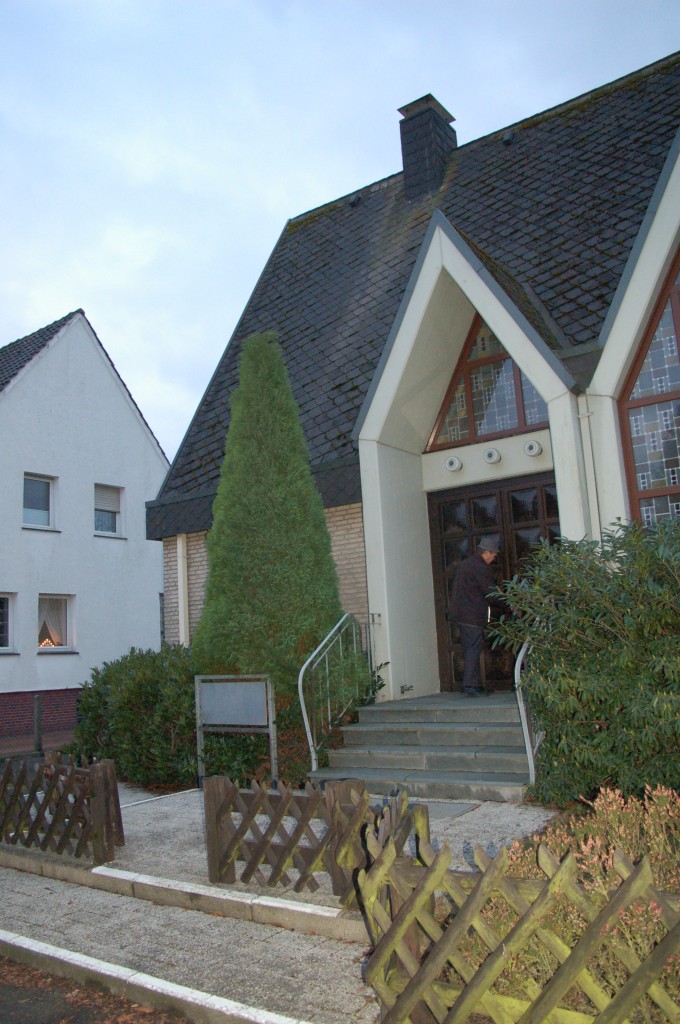
To the left of the Leyland sits the "mother hedge" of incredibly invasive cherry laurel. Some sadly and beyond-repair overgrown heather can be spotted in the foreground.
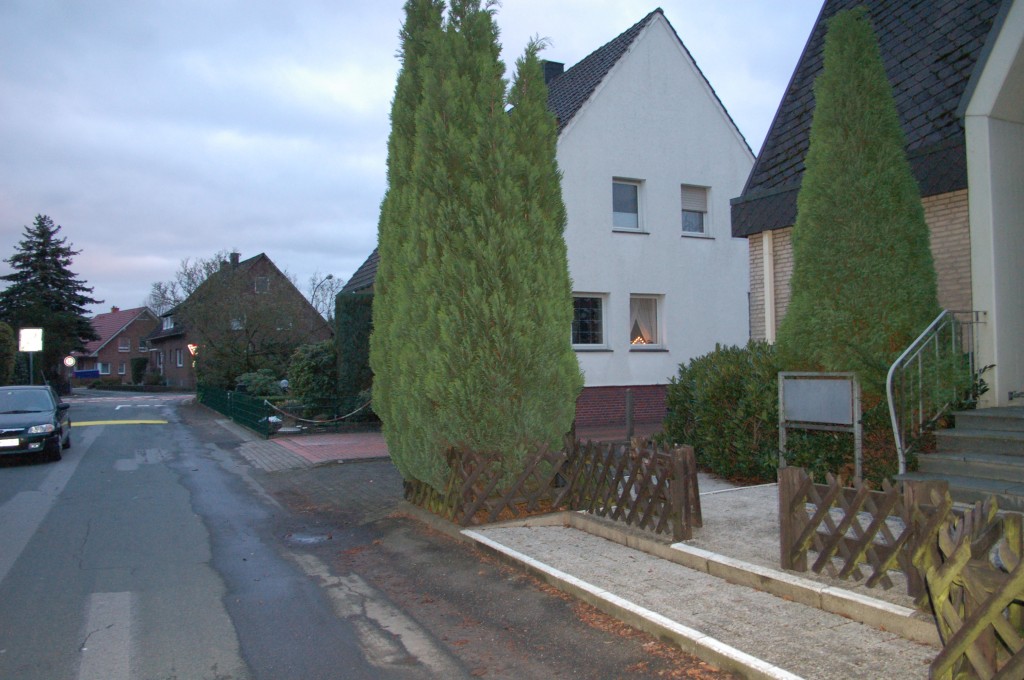
Leylands #3 and #4. These stay for a bit, until I can think up something better for this spot. Suggestions most welcome!
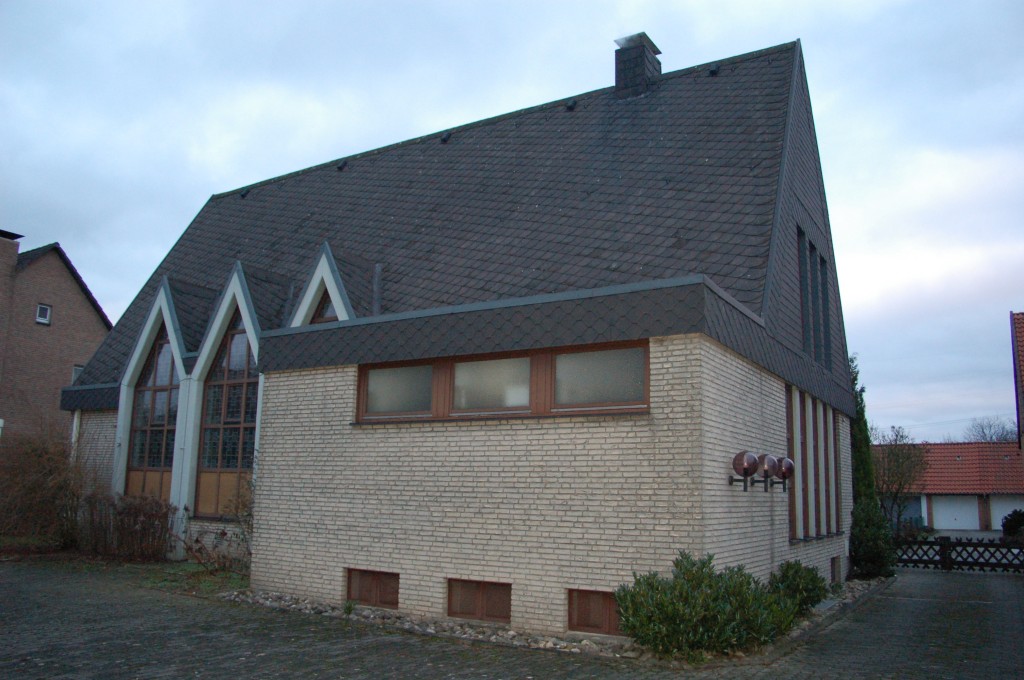
The view of the back of the house with the toilet block. That shrubbery? More cherry laurel children.
The Parking Lot
Our church doesn’t have a graveyard (German churches don’t since at least the 19th century). But we do have another churchly necessity: a large parking lot.
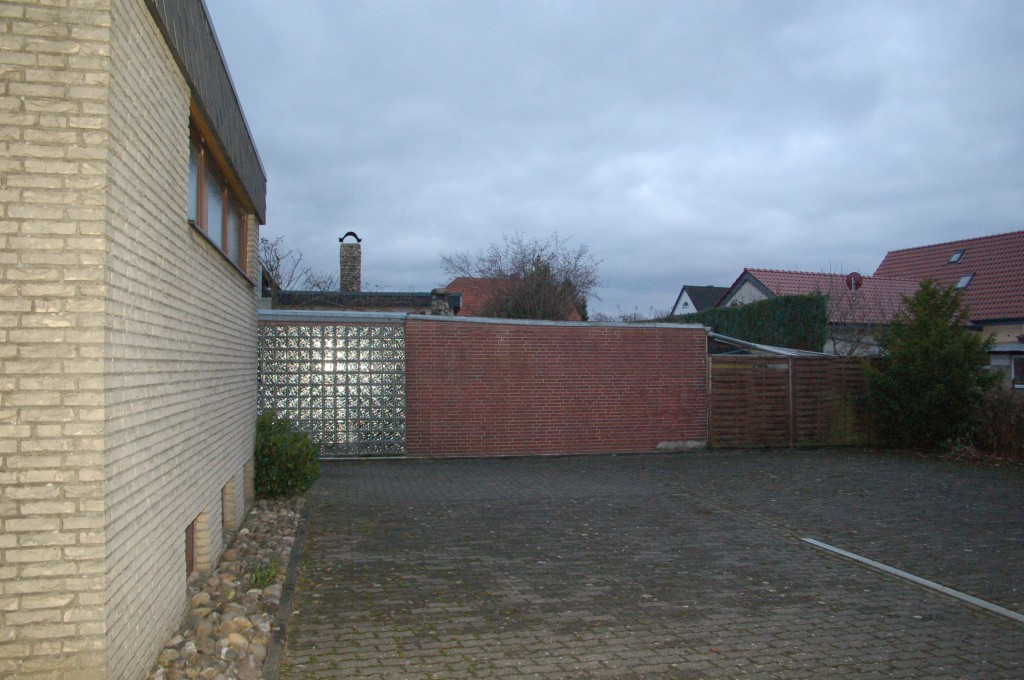
The parking lot. We're planning on eventually putting a garage in this back corner. That yew on the right will then have to go. I wonder if it can be moved since I find it kind of pretty.
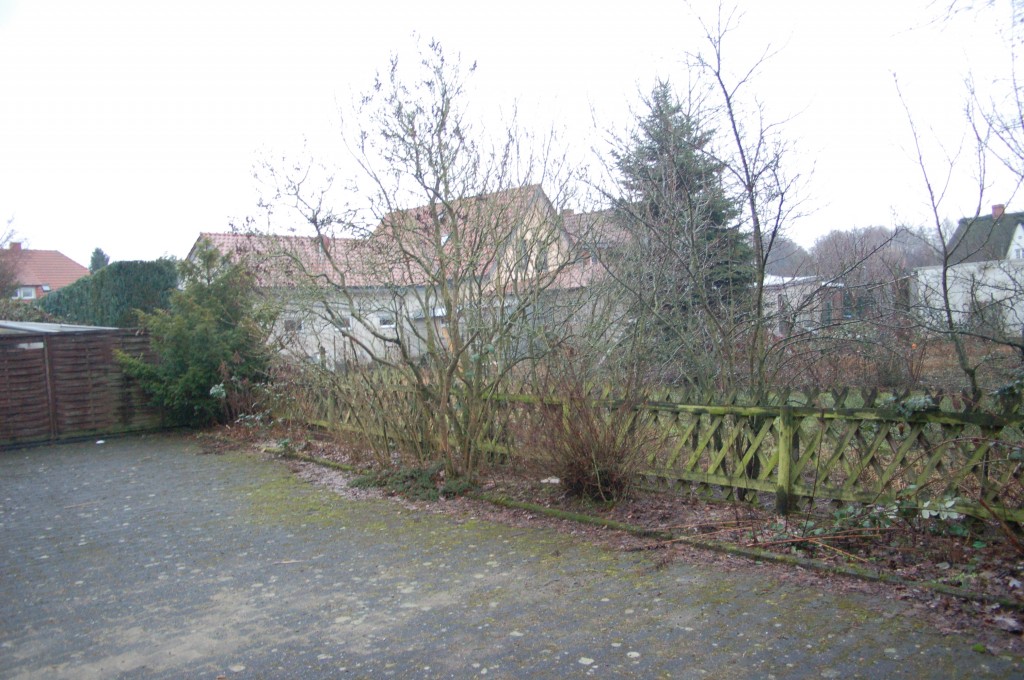
The back border. Mostly white lilacs, day lilies, invasive blackberries from the neighbors, and some unidentified shrubs.
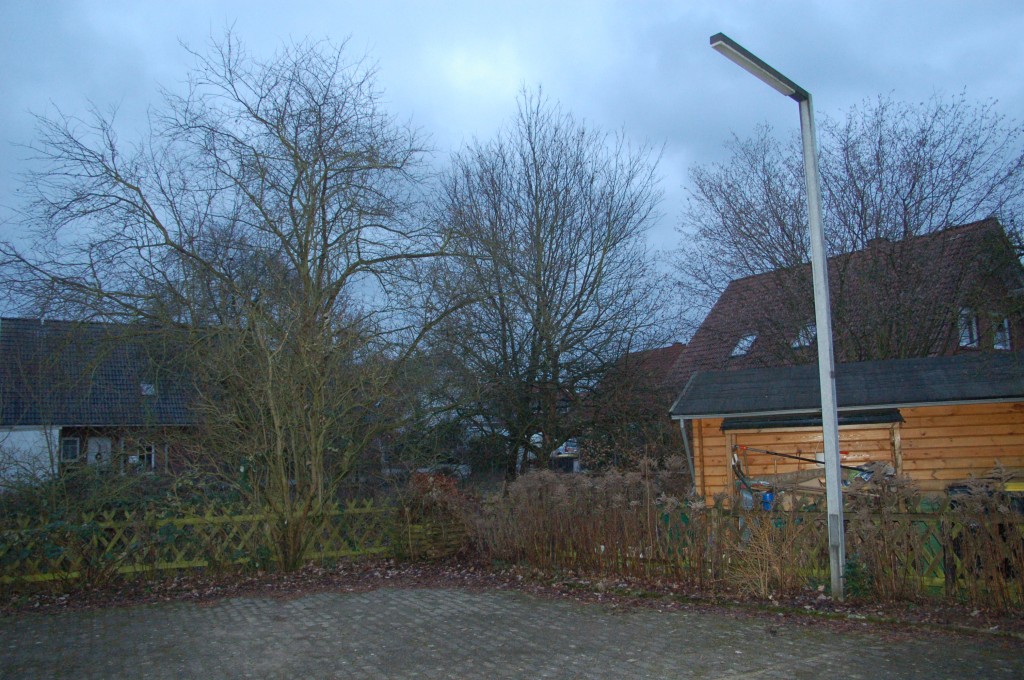
An old damaged wooden compost bin and some currant bushes. The parking lot is lit by this very municipal looking street lamp, which belongs to the building.
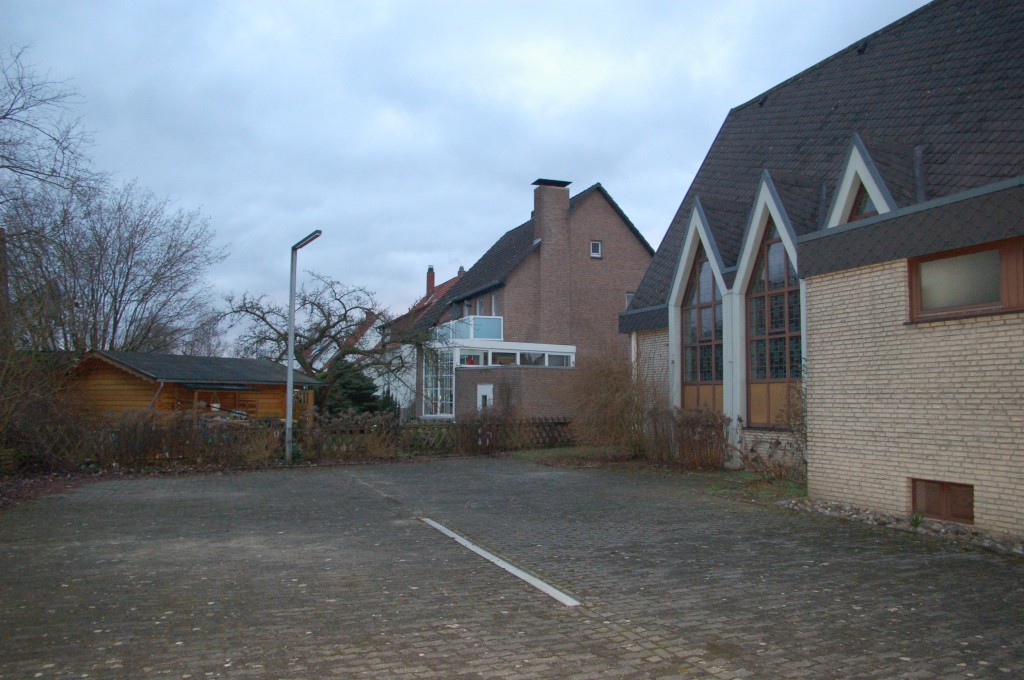
A big overgrown forsythia bush sits at the back corner of the house. There's a buddleia back there too. The whitish strip is a drain.
The paving is in ok shape. According to the neighbors, the lot has never been cleaned in the 30+ years of the church’s existence until we pressure cleaned it. The cleaning process brought together several big boxes worth of dirt that we threw out, since who knows what chemicals were sprayed on the lot. Now that the weather has warmed up, plants are popping up between the paving stones. We’re keeping those in check. One wild strawberry (fraises de bois) plant has special dispensation, and is happily growing next to the drain, producing tasty little strawberries.
Forsythias and a Blank Wall
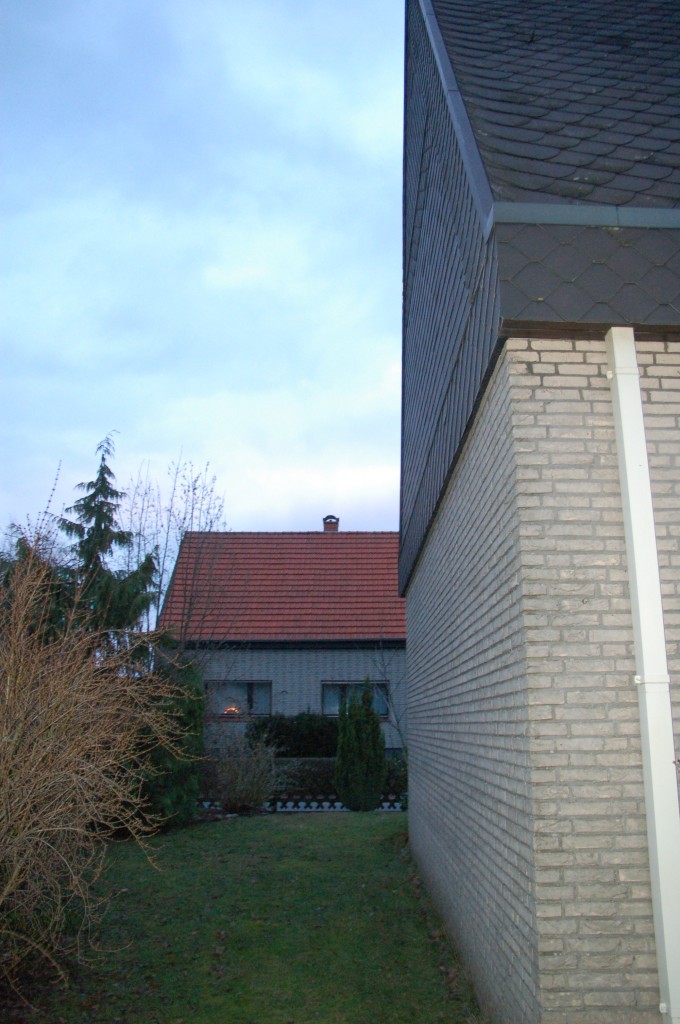
The altar side of the building. There's a little bit of grass (mostly weeds and moss actually). Forsythias on the left. A buddleia and a thuja/cypressy thing in the background.
Haphazard Plant Placement and the Mathematician Tree
One continuing theme in this garden is the haphazard placement of most of the plants and other objects like edging pavers. The curly hazelnut tree is put too far from the corner of the plot, so it blocks access to a triangular area that is about 10 m2. This area (no pictures) is covered in weeds and its only use is to annoy the neighbor at the moment.
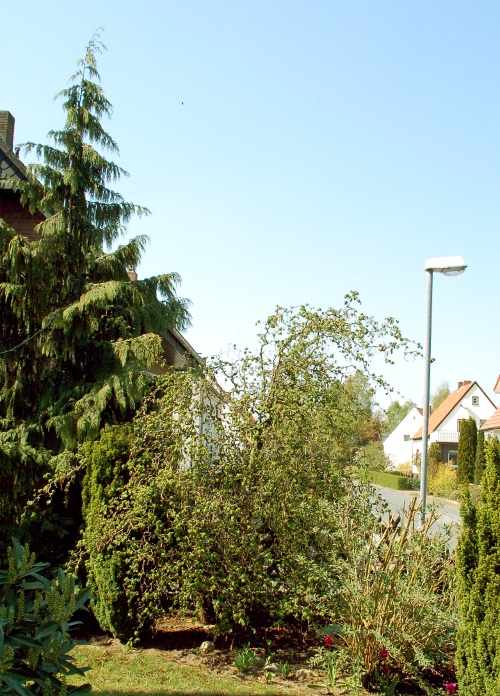
Curly Hazelnut. On the left there is a random thuja conifer in possibly the stupidest place one can find for such a plant.
Another little tree, a thuja under the hazelnut, reminds me of this old chestnut of a joke:
A philosopher, a physicist, a mathematician and a computer scientist were travelling through Scotland when they saw a black sheep through the window of the train. "Aha," says the philosopher, "I see that Scottish sheep are black." "Hmm," says the physicist, "You mean that some Scottish sheep are black." "No," says the mathematician, "All we know is that there is at least one sheep in Scotland, and that at least one side of that one sheep is black!" "Oh, no!" shouts the computer scientist, "A special case!"
The mathematician would be right about the thuja. It was green only from one side. Since conifers don’t regrow green from brown wood, there’s no hope of improvement if one were to move the plant. The poor thing had to go.
So, as one can see, there is a lot to be done in the garden to get it to a better state.
© 2011 – 2012, Converting a Church. All rights reserved.

